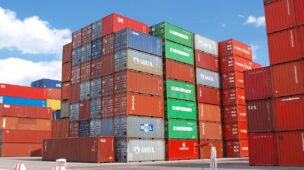Tempo de leitura: 2 minutos
India was one of the first in Asia to recognize the effectiveness of the Export Processing Zone (EPZ) model in promoting exports, with Asia’s first EPZ set up in Kandla in 1965. With a view to overcome the shortcomings experienced on account of the multiplicity of controls and clearances; absence of world-class infrastructure, and an unstable fiscal regime and with a view to attract larger foreign investments in India, the Special Economic Zones (SEZs) Policy was announced in April 2000.
This policy intended to make SEZs an engine for economic growth supported by quality infrastructure complemented by an attractive fiscal package, both at the Centre and the State level, with the minimum possible regulations. SEZs in India functioned from 1.11.2000 to 09.02.2006 under the provisions of the Foreign Trade Policy and fiscal incentives were made effective through the provisions of relevant statutes.
To instill confidence in investors and signal the Government’s commitment to a stable SEZ policy regime and with a view to impart stability to the SEZ regime thereby generating greater economic activity and employment through the establishment of SEZs, a comprehensive draft SEZ Bill prepared after extensive discussions with the stakeholders. A number of meetings were held in various parts of the country both by the Minister for Commerce and Industry as well as senior officials for this purpose.
The Special Economic Zones Act, 2005, was passed by Parliament in May, 2005 which received Presidential assent on the 23rd of June, 2005. The draft SEZ Rules were widely discussed and put on the website of the Department of Commerce offering suggestions/comments. Around 800 suggestions were received on the draft rules. After extensive consultations, the SEZ Act, 2005, supported by SEZ Rules, came into effect on 10th February, 2006, providing for drastic simplification of procedures and for single window clearance on matters relating to central as well as state governments. The main objectives of the SEZ Act are:
- generation of additional economic activity
- promotion of exports of goods and services
- promotion of investment from domestic and foreign sources
- creation of employment opportunities
- development of infrastructure facilities
It is expected that this will trigger a large flow of foreign and domestic investment in SEZs, in infrastructure and productive capacity, leading to generation of additional economic activity and creation of employment opportunities.
Leia mais






Os comentários foram encerrados, mas trackbacks e pingbacks estão abertos.